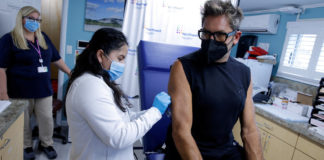
There is no question that the pandemic has been immensely stressful for health care workers, especially for those on the frontline of patient care. Yet, even before the pandemic, the regular demands of many health care industry jobs put these workers at risk for burnout.
Now, a new study from the University of Georgia suggests that investing in more physical activity programming could mitigate the effects of stress and improve worker mental and emotional health.
Tackling burnout in health care is critical to ensuring patient safety, said lead author Marilyn Wolff, an alumna of UGA’s College of Public Health.
“Studies show increased worker stress and burnout are associated with poor patient safety. In order to keep our patients safe and provide quality health care delivery, we must first care for our health care workers, physically, mentally and socially,” she said.
Physical activity, said Wolff, is a known coping strategy against burnout, but the type of activity matters.
Less is known about the role of physical activity people may get at work versus in their free time. I set out to better understand the separate associations of occupational and leisure-time activity with worker stress, burnout and well-being.”
Marilyn Wolff, Lead Author
The study surveyed 550 full-time health care employees, including physicians and nurses as well as those who didn’t work directly with patients like coders, billers and analysts.
Respondents were asked about their physical activity on the job and physical activities they did in their free time. Workers also answered questions about their job stress, whether they felt exhausted or disengaged, and questions about their emotional well-being – all markers of burnout.
An analysis of the responses showed that employees who experienced higher levels of job-related physical activity reported feeling more stressed and exhausted. Conversely, when employees were able to spend more time doing leisure-time physical activity, their reports of job stress and exhaustion were lower.
This suggests that leisure-time physical activity was helping health care workers exit the stress cycle, said co-author Jennifer Gay, a professor of health promotion and behavior in the College of Public Health.
“The stress cycle begins with a stressor, then an individual’s physiological response to that stressor, and optimally, a release from the body’s physiological response,” said Gay. Leisure-time activity is known to help a person exit the stress cycle.
However, when reported levels of job-related physical activity were really high, leisure-time activity didn’t have the same mitigating effect on stress.
“An interesting next step in this line of research would be to examine timing of leisure-time activity related to work stress,” said Wolff. “For example, we may see less stress when workers exercise in the middle of their workday as opposed to before or after work.
This study was done before the COVID-19 pandemic inundated hospitals and health care systems across the U.S., but Wolff and Gay say the take home message still holds true.
“It is important for health care workers to be able to find that release to minimize stress and burnout. Physical activity is one strategy for exiting out of the stress cycle, even when the stressor is still present, like the pandemic,” said Gay.
Though more research is needed to untangle the connection between work-related physical activity and mental health, the benefits of fun physical activity are clear. More and better physical activity programming or providing structural supports that accommodate different work schedules and preferences would benefit workers, said Wolff.
Wolff, M.B., et al. (2021) Associations Between Occupational and Leisure-Time Physical Activity With Employee Stress, Burnout and Well-Being Among Healthcare Industry Workers. American Journal of Health Promotion. doi.org/10.1177/08901171211011372.








